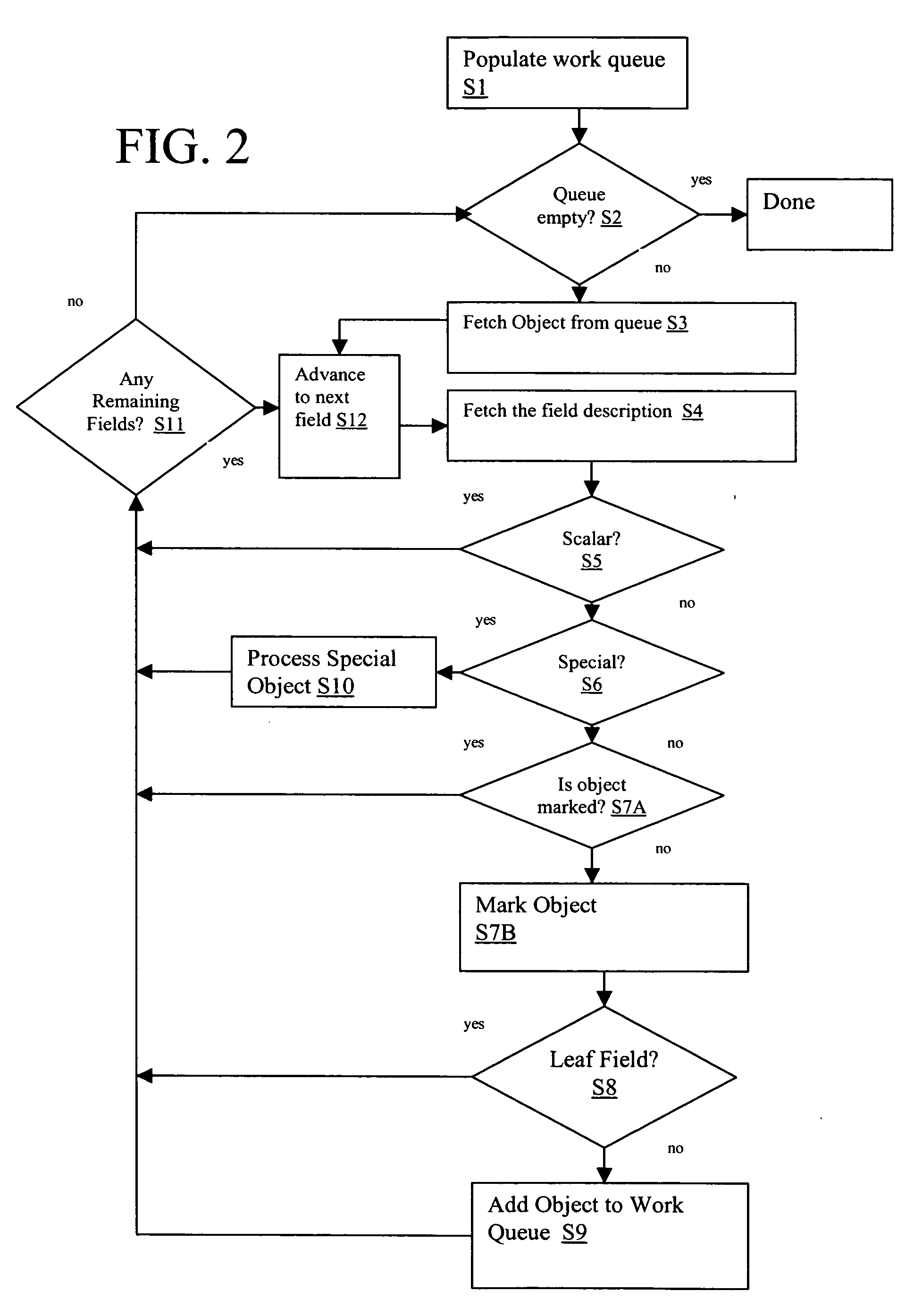Leaf avoidance during garbage collection in a Java Virtual Machine
a virtual machine and garbage collection technology, applied in the field of avoiding leaves during garbage collection, can solve the problems of reducing the number of objects which must be traversed, and tending to be a fairly time-consuming task
- Summary
- Abstract
- Description
- Claims
- Application Information
AI Technical Summary
Problems solved by technology
Method used
Image
Examples
Embodiment Construction
[0016] As discussed above, during a mark phase of a Java Virtual Machine (JVM) garbage collection process, objects (beginning with a set of root objects) are traversed and marked, indicating that each marked object is live. Thus, during the mark phase, each object in the “root set” is marked. Also, each object referenced by a marked object is marked, until all reachable objects have been marked. Objects are traversed by examining the fields in the object to determine if the field is an object field. If the field is an object field and the value in the field has not yet been marked, then the value in that field is marked and the value is added to a work queue so that it can be later traversed. While the present invention is generally described with reference to a JVM environment, it is understood that the application can apply to any similar object-oriented runtime environment or system that utilizes garbage collection.
[0017] In a JVM environment, certain classes of objects cannot c...
PUM
 Login to View More
Login to View More Abstract
Description
Claims
Application Information
 Login to View More
Login to View More - R&D
- Intellectual Property
- Life Sciences
- Materials
- Tech Scout
- Unparalleled Data Quality
- Higher Quality Content
- 60% Fewer Hallucinations
Browse by: Latest US Patents, China's latest patents, Technical Efficacy Thesaurus, Application Domain, Technology Topic, Popular Technical Reports.
© 2025 PatSnap. All rights reserved.Legal|Privacy policy|Modern Slavery Act Transparency Statement|Sitemap|About US| Contact US: help@patsnap.com



